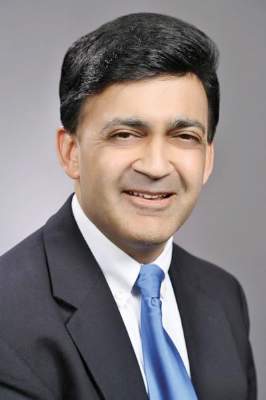User login
Infectious Diseases Society of America 2014 Practice Guidelines To Diagnose, Manage Skin, Soft Tissue Infections
Background
Surveillance studies in the U.S. have shown an increase in the number of hospitalizations for skin and soft tissue infections (SSTIs) by 29% from 2000 to 2004.1 Moreover, recent studies on the inpatient management of SSTIs have shown significant deviation from recommended therapy, with the majority of patients receiving excessively long treatment courses or unnecessarily broad antimicrobial coverage.2,3
With the ever-increasing threat of antibiotic resistance and rising rates of Clostridium difficile colitis, this update provides clinicians with a set of recommendations to apply antibiotic stewardship while effectively managing SSTIs.4
Guideline Update
In June 2014, the Infectious Diseases Society of America (IDSA) published an update to its 2005 guidelines for the treatment of SSTIs.5 For purulent SSTIs (cutaneous abscesses, furuncles, carbuncles, and inflamed epidermoid cysts), incision and drainage is primary therapy. The use of systemic antimicrobial therapy is unnecessary for mild cases, even those caused by methicillin-resistant Staphylococcus aureus (MRSA). The use of empiric adjunctive antibiotics should be reserved for those with impaired host defenses or signs of systemic inflammatory response syndrome (SIRS). The recommended antibiotics in such patients have anti-MRSA activity and include trimethoprim-sulfamethoxazole or doxycycline for moderate infections and vancomycin, daptomycin, linezolid, telavancin, or ceftaroline for severe infections. Antibiotics should subsequently be adjusted based on susceptibilities of the organism cultured from purulent drainage.
Nonpurulent cellulitis without SIRS may be treated on an outpatient basis with an oral antibiotic targeted against streptococci, including penicillin VK, cephalosporins, dicloxacillin, or clindamycin. Cellulitis with SIRS may be treated with an intravenous antibiotic with methicillin-susceptible Staphylococcus aureus (MSSA) activity, including penicillin, ceftriaxone, cefazolin, or clindamycin.
The use of antibiotics with MRSA activity should be reserved for those at highest risk, such as patients with impaired immunity or signs of a deep space infection. Cultures of blood, cutaneous biopsies, or swabs are not routinely recommended; however, prompt surgical consultation is recommended for patients suspected of having a necrotizing infection or gangrene.
The recommended duration of antimicrobial therapy for uncomplicated cellulitis is five days, and therapy should only be extended in those who have not shown clinical improvement. Elevation of the affected area and the use of systemic corticosteroids in nondiabetic adults may lead to a more rapid resolution of cellulitis, although the clinician must ensure that a deeper space infection is not present prior to initiating steroids.
Preventing the recurrence of cellulitis is an integral part of routine patient care and includes the treatment of interdigital toe space fissuring, scaling, and maceration, which may act as a reservoir for streptococci. Likewise, treatment of predisposing conditions such as eczema, venous insufficiency, and lymphedema may reduce the recurrence of infection. In patients who have three to four episodes of cellulitis despite attempts to treat or control predisposing risk factors, the use of prophylactic antibiotics with erythromycin or penicillin may be considered.
For patients with an SSTI during the first episode of febrile neutropenia, hospitalization and empiric therapy with vancomycin and an antipseudomonal beta-lactam are recommended. Antibiotics should subsequently be adjusted based on the antimicrobial susceptibilities of isolated organisms.
For patients with SSTIs in the presence of persistent or recurrent febrile neutropenia, empirically adding antifungal therapy is recommended. Such patients should be aggressively evaluated with blood cultures and biopsy with tissue culture of the skin lesions. The recommended duration of therapy is seven to 14 days for most bacterial SSTIs in the immunocompromised patient.
Analysis
The updated SSTI guidelines provide hospitalists with a practical algorithm for the management of SSTIs, focusing on the presence or absence of purulence, systemic signs of infection, and host immune status to guide therapy. Whereas the 2005 guidelines provided clinicians with a list of recommended antibiotics based on spectrum of activity, the updated guidelines provide a short list of empiric antibiotics based on the type and severity of infection.6
The list of recommended antibiotics with MRSA activity has been updated to include ceftaroline and telavancin. Of note, since these guidelines have been published, three new antibiotics with MRSA activity (tedizolid, oritavancin, and dalbavancin) have been approved by the FDA for the treatment of SSTIs, although their specific role in routine clinical practice is not yet determined.
The treatment algorithm for surgical site infections remains largely unchanged, which reinforces the concept that fever in the first 48 hours is unlikely to represent infection unless accompanied by purulent wound drainage with a positive culture. Likewise, the guidelines recommend risk-stratifying patients with fever and a suspected wound infection more than four days after surgery by the presence or absence of systemic infection or evidence of surrounding cellulitis.
A comprehensive guide to the management of specific pathogens or conditions, such as tularemia, cutaneous anthrax, and bite wounds, is largely unchanged, although the update now includes focused summary statements to navigate through these recommendations more easily.
The updated guidelines provide a more robust yet focused set of recommendations for the diagnosis and treatment of bacterial, fungal, and viral skin infections in immunocompromised hosts, especially those with neutropenia.
HM Takeaways
The 2014 update to the IDSA practice guidelines for SSTIs contains a chart to help clinicians diagnose and manage common skin infections more effectively. The guidelines’ algorithm stratifies the severity of illness according to whether or not the patient has SIRS or is immunocompromised. The authors recommend against the use of antibiotics for mild purulent SSTIs and reserve the use of anti-MRSA therapy mainly for patients with moderate purulent SSTIs, those with severe SSTIs, or those at high risk for MRSA. Likewise, the use of broad spectrum gram-negative coverage is not recommended in most common, uncomplicated SSTIs and should be reserved for special populations, such as those with immune compromise.
The guidelines strongly recommend a short, five-day course of therapy for uncomplicated cellulitis. Longer treatment courses (i.e., 10 days) are unnecessary and do not improve efficacy for those exhibiting clinical improvement by day five.
Drs. Yogo and Saveli work in the division of infectious disease in the department of medicine at the University of Colorado School of Medicine in Aurora.
References
- Edelsberg J, Taneja C, Zervos M, et al. Trends in the US hospital admissions for skin and soft tissue infections. Emerg Infect Dis. 2009;15(9):1516-1518.
- Jenkins TC, Sabel AL, Sacrone EE, Price CS, Mehler PS, Burman WJ. Skin and soft-tissue infections requiring hospitalization at an academic medical center: opportunities for antimicrobial stewardship. Clin Infect Dis. 2010;51(8):895-903.
- Jenkins TC, Knepper BC, Moore SJ, et al. Antibiotic prescribing practices in a multicenter cohort of patients hospitalized for acute bacterial skin and skin structure infection. Infect Control Hosp Epidemiol. 2014;35(10):1241-1250.
- U.S. Department of Health and Human Services. Centers for Disease Control and Prevention. Antibiotic resistance threats in the United States, 2013. Available at: http://www.cdc.gov/drugresistance/threat-report-2013/pdf/ar-threats-2013-508.pdf. Accessed February 8, 2015.
- Stevens DL, Bisno AL, Chambers HF, et al. Practice guidelines for the diagnosis and management of skin and soft tissue infections: 2014 update by the Infectious Diseases Society of America. Clin Infect Dis. 2014;59(2):e10-52. Stevens DL, Bisno AL, Chambers HF, et al.
- Practice guidelines for the diagnosis and management of skin and soft-tissue infections. Clin Infect Dis. 2005;41(10):1373-1406.
Background
Surveillance studies in the U.S. have shown an increase in the number of hospitalizations for skin and soft tissue infections (SSTIs) by 29% from 2000 to 2004.1 Moreover, recent studies on the inpatient management of SSTIs have shown significant deviation from recommended therapy, with the majority of patients receiving excessively long treatment courses or unnecessarily broad antimicrobial coverage.2,3
With the ever-increasing threat of antibiotic resistance and rising rates of Clostridium difficile colitis, this update provides clinicians with a set of recommendations to apply antibiotic stewardship while effectively managing SSTIs.4
Guideline Update
In June 2014, the Infectious Diseases Society of America (IDSA) published an update to its 2005 guidelines for the treatment of SSTIs.5 For purulent SSTIs (cutaneous abscesses, furuncles, carbuncles, and inflamed epidermoid cysts), incision and drainage is primary therapy. The use of systemic antimicrobial therapy is unnecessary for mild cases, even those caused by methicillin-resistant Staphylococcus aureus (MRSA). The use of empiric adjunctive antibiotics should be reserved for those with impaired host defenses or signs of systemic inflammatory response syndrome (SIRS). The recommended antibiotics in such patients have anti-MRSA activity and include trimethoprim-sulfamethoxazole or doxycycline for moderate infections and vancomycin, daptomycin, linezolid, telavancin, or ceftaroline for severe infections. Antibiotics should subsequently be adjusted based on susceptibilities of the organism cultured from purulent drainage.
Nonpurulent cellulitis without SIRS may be treated on an outpatient basis with an oral antibiotic targeted against streptococci, including penicillin VK, cephalosporins, dicloxacillin, or clindamycin. Cellulitis with SIRS may be treated with an intravenous antibiotic with methicillin-susceptible Staphylococcus aureus (MSSA) activity, including penicillin, ceftriaxone, cefazolin, or clindamycin.
The use of antibiotics with MRSA activity should be reserved for those at highest risk, such as patients with impaired immunity or signs of a deep space infection. Cultures of blood, cutaneous biopsies, or swabs are not routinely recommended; however, prompt surgical consultation is recommended for patients suspected of having a necrotizing infection or gangrene.
The recommended duration of antimicrobial therapy for uncomplicated cellulitis is five days, and therapy should only be extended in those who have not shown clinical improvement. Elevation of the affected area and the use of systemic corticosteroids in nondiabetic adults may lead to a more rapid resolution of cellulitis, although the clinician must ensure that a deeper space infection is not present prior to initiating steroids.
Preventing the recurrence of cellulitis is an integral part of routine patient care and includes the treatment of interdigital toe space fissuring, scaling, and maceration, which may act as a reservoir for streptococci. Likewise, treatment of predisposing conditions such as eczema, venous insufficiency, and lymphedema may reduce the recurrence of infection. In patients who have three to four episodes of cellulitis despite attempts to treat or control predisposing risk factors, the use of prophylactic antibiotics with erythromycin or penicillin may be considered.
For patients with an SSTI during the first episode of febrile neutropenia, hospitalization and empiric therapy with vancomycin and an antipseudomonal beta-lactam are recommended. Antibiotics should subsequently be adjusted based on the antimicrobial susceptibilities of isolated organisms.
For patients with SSTIs in the presence of persistent or recurrent febrile neutropenia, empirically adding antifungal therapy is recommended. Such patients should be aggressively evaluated with blood cultures and biopsy with tissue culture of the skin lesions. The recommended duration of therapy is seven to 14 days for most bacterial SSTIs in the immunocompromised patient.
Analysis
The updated SSTI guidelines provide hospitalists with a practical algorithm for the management of SSTIs, focusing on the presence or absence of purulence, systemic signs of infection, and host immune status to guide therapy. Whereas the 2005 guidelines provided clinicians with a list of recommended antibiotics based on spectrum of activity, the updated guidelines provide a short list of empiric antibiotics based on the type and severity of infection.6
The list of recommended antibiotics with MRSA activity has been updated to include ceftaroline and telavancin. Of note, since these guidelines have been published, three new antibiotics with MRSA activity (tedizolid, oritavancin, and dalbavancin) have been approved by the FDA for the treatment of SSTIs, although their specific role in routine clinical practice is not yet determined.
The treatment algorithm for surgical site infections remains largely unchanged, which reinforces the concept that fever in the first 48 hours is unlikely to represent infection unless accompanied by purulent wound drainage with a positive culture. Likewise, the guidelines recommend risk-stratifying patients with fever and a suspected wound infection more than four days after surgery by the presence or absence of systemic infection or evidence of surrounding cellulitis.
A comprehensive guide to the management of specific pathogens or conditions, such as tularemia, cutaneous anthrax, and bite wounds, is largely unchanged, although the update now includes focused summary statements to navigate through these recommendations more easily.
The updated guidelines provide a more robust yet focused set of recommendations for the diagnosis and treatment of bacterial, fungal, and viral skin infections in immunocompromised hosts, especially those with neutropenia.
HM Takeaways
The 2014 update to the IDSA practice guidelines for SSTIs contains a chart to help clinicians diagnose and manage common skin infections more effectively. The guidelines’ algorithm stratifies the severity of illness according to whether or not the patient has SIRS or is immunocompromised. The authors recommend against the use of antibiotics for mild purulent SSTIs and reserve the use of anti-MRSA therapy mainly for patients with moderate purulent SSTIs, those with severe SSTIs, or those at high risk for MRSA. Likewise, the use of broad spectrum gram-negative coverage is not recommended in most common, uncomplicated SSTIs and should be reserved for special populations, such as those with immune compromise.
The guidelines strongly recommend a short, five-day course of therapy for uncomplicated cellulitis. Longer treatment courses (i.e., 10 days) are unnecessary and do not improve efficacy for those exhibiting clinical improvement by day five.
Drs. Yogo and Saveli work in the division of infectious disease in the department of medicine at the University of Colorado School of Medicine in Aurora.
References
- Edelsberg J, Taneja C, Zervos M, et al. Trends in the US hospital admissions for skin and soft tissue infections. Emerg Infect Dis. 2009;15(9):1516-1518.
- Jenkins TC, Sabel AL, Sacrone EE, Price CS, Mehler PS, Burman WJ. Skin and soft-tissue infections requiring hospitalization at an academic medical center: opportunities for antimicrobial stewardship. Clin Infect Dis. 2010;51(8):895-903.
- Jenkins TC, Knepper BC, Moore SJ, et al. Antibiotic prescribing practices in a multicenter cohort of patients hospitalized for acute bacterial skin and skin structure infection. Infect Control Hosp Epidemiol. 2014;35(10):1241-1250.
- U.S. Department of Health and Human Services. Centers for Disease Control and Prevention. Antibiotic resistance threats in the United States, 2013. Available at: http://www.cdc.gov/drugresistance/threat-report-2013/pdf/ar-threats-2013-508.pdf. Accessed February 8, 2015.
- Stevens DL, Bisno AL, Chambers HF, et al. Practice guidelines for the diagnosis and management of skin and soft tissue infections: 2014 update by the Infectious Diseases Society of America. Clin Infect Dis. 2014;59(2):e10-52. Stevens DL, Bisno AL, Chambers HF, et al.
- Practice guidelines for the diagnosis and management of skin and soft-tissue infections. Clin Infect Dis. 2005;41(10):1373-1406.
Background
Surveillance studies in the U.S. have shown an increase in the number of hospitalizations for skin and soft tissue infections (SSTIs) by 29% from 2000 to 2004.1 Moreover, recent studies on the inpatient management of SSTIs have shown significant deviation from recommended therapy, with the majority of patients receiving excessively long treatment courses or unnecessarily broad antimicrobial coverage.2,3
With the ever-increasing threat of antibiotic resistance and rising rates of Clostridium difficile colitis, this update provides clinicians with a set of recommendations to apply antibiotic stewardship while effectively managing SSTIs.4
Guideline Update
In June 2014, the Infectious Diseases Society of America (IDSA) published an update to its 2005 guidelines for the treatment of SSTIs.5 For purulent SSTIs (cutaneous abscesses, furuncles, carbuncles, and inflamed epidermoid cysts), incision and drainage is primary therapy. The use of systemic antimicrobial therapy is unnecessary for mild cases, even those caused by methicillin-resistant Staphylococcus aureus (MRSA). The use of empiric adjunctive antibiotics should be reserved for those with impaired host defenses or signs of systemic inflammatory response syndrome (SIRS). The recommended antibiotics in such patients have anti-MRSA activity and include trimethoprim-sulfamethoxazole or doxycycline for moderate infections and vancomycin, daptomycin, linezolid, telavancin, or ceftaroline for severe infections. Antibiotics should subsequently be adjusted based on susceptibilities of the organism cultured from purulent drainage.
Nonpurulent cellulitis without SIRS may be treated on an outpatient basis with an oral antibiotic targeted against streptococci, including penicillin VK, cephalosporins, dicloxacillin, or clindamycin. Cellulitis with SIRS may be treated with an intravenous antibiotic with methicillin-susceptible Staphylococcus aureus (MSSA) activity, including penicillin, ceftriaxone, cefazolin, or clindamycin.
The use of antibiotics with MRSA activity should be reserved for those at highest risk, such as patients with impaired immunity or signs of a deep space infection. Cultures of blood, cutaneous biopsies, or swabs are not routinely recommended; however, prompt surgical consultation is recommended for patients suspected of having a necrotizing infection or gangrene.
The recommended duration of antimicrobial therapy for uncomplicated cellulitis is five days, and therapy should only be extended in those who have not shown clinical improvement. Elevation of the affected area and the use of systemic corticosteroids in nondiabetic adults may lead to a more rapid resolution of cellulitis, although the clinician must ensure that a deeper space infection is not present prior to initiating steroids.
Preventing the recurrence of cellulitis is an integral part of routine patient care and includes the treatment of interdigital toe space fissuring, scaling, and maceration, which may act as a reservoir for streptococci. Likewise, treatment of predisposing conditions such as eczema, venous insufficiency, and lymphedema may reduce the recurrence of infection. In patients who have three to four episodes of cellulitis despite attempts to treat or control predisposing risk factors, the use of prophylactic antibiotics with erythromycin or penicillin may be considered.
For patients with an SSTI during the first episode of febrile neutropenia, hospitalization and empiric therapy with vancomycin and an antipseudomonal beta-lactam are recommended. Antibiotics should subsequently be adjusted based on the antimicrobial susceptibilities of isolated organisms.
For patients with SSTIs in the presence of persistent or recurrent febrile neutropenia, empirically adding antifungal therapy is recommended. Such patients should be aggressively evaluated with blood cultures and biopsy with tissue culture of the skin lesions. The recommended duration of therapy is seven to 14 days for most bacterial SSTIs in the immunocompromised patient.
Analysis
The updated SSTI guidelines provide hospitalists with a practical algorithm for the management of SSTIs, focusing on the presence or absence of purulence, systemic signs of infection, and host immune status to guide therapy. Whereas the 2005 guidelines provided clinicians with a list of recommended antibiotics based on spectrum of activity, the updated guidelines provide a short list of empiric antibiotics based on the type and severity of infection.6
The list of recommended antibiotics with MRSA activity has been updated to include ceftaroline and telavancin. Of note, since these guidelines have been published, three new antibiotics with MRSA activity (tedizolid, oritavancin, and dalbavancin) have been approved by the FDA for the treatment of SSTIs, although their specific role in routine clinical practice is not yet determined.
The treatment algorithm for surgical site infections remains largely unchanged, which reinforces the concept that fever in the first 48 hours is unlikely to represent infection unless accompanied by purulent wound drainage with a positive culture. Likewise, the guidelines recommend risk-stratifying patients with fever and a suspected wound infection more than four days after surgery by the presence or absence of systemic infection or evidence of surrounding cellulitis.
A comprehensive guide to the management of specific pathogens or conditions, such as tularemia, cutaneous anthrax, and bite wounds, is largely unchanged, although the update now includes focused summary statements to navigate through these recommendations more easily.
The updated guidelines provide a more robust yet focused set of recommendations for the diagnosis and treatment of bacterial, fungal, and viral skin infections in immunocompromised hosts, especially those with neutropenia.
HM Takeaways
The 2014 update to the IDSA practice guidelines for SSTIs contains a chart to help clinicians diagnose and manage common skin infections more effectively. The guidelines’ algorithm stratifies the severity of illness according to whether or not the patient has SIRS or is immunocompromised. The authors recommend against the use of antibiotics for mild purulent SSTIs and reserve the use of anti-MRSA therapy mainly for patients with moderate purulent SSTIs, those with severe SSTIs, or those at high risk for MRSA. Likewise, the use of broad spectrum gram-negative coverage is not recommended in most common, uncomplicated SSTIs and should be reserved for special populations, such as those with immune compromise.
The guidelines strongly recommend a short, five-day course of therapy for uncomplicated cellulitis. Longer treatment courses (i.e., 10 days) are unnecessary and do not improve efficacy for those exhibiting clinical improvement by day five.
Drs. Yogo and Saveli work in the division of infectious disease in the department of medicine at the University of Colorado School of Medicine in Aurora.
References
- Edelsberg J, Taneja C, Zervos M, et al. Trends in the US hospital admissions for skin and soft tissue infections. Emerg Infect Dis. 2009;15(9):1516-1518.
- Jenkins TC, Sabel AL, Sacrone EE, Price CS, Mehler PS, Burman WJ. Skin and soft-tissue infections requiring hospitalization at an academic medical center: opportunities for antimicrobial stewardship. Clin Infect Dis. 2010;51(8):895-903.
- Jenkins TC, Knepper BC, Moore SJ, et al. Antibiotic prescribing practices in a multicenter cohort of patients hospitalized for acute bacterial skin and skin structure infection. Infect Control Hosp Epidemiol. 2014;35(10):1241-1250.
- U.S. Department of Health and Human Services. Centers for Disease Control and Prevention. Antibiotic resistance threats in the United States, 2013. Available at: http://www.cdc.gov/drugresistance/threat-report-2013/pdf/ar-threats-2013-508.pdf. Accessed February 8, 2015.
- Stevens DL, Bisno AL, Chambers HF, et al. Practice guidelines for the diagnosis and management of skin and soft tissue infections: 2014 update by the Infectious Diseases Society of America. Clin Infect Dis. 2014;59(2):e10-52. Stevens DL, Bisno AL, Chambers HF, et al.
- Practice guidelines for the diagnosis and management of skin and soft-tissue infections. Clin Infect Dis. 2005;41(10):1373-1406.
Justices gear up to hear arguments in ACA subsidy case
The showdown over federal subsidies under the Affordable Care Act commences March 4 as Supreme Court justices prepare to hear arguments in King v. Burwell. The outcome could significantly alter the ACA and impact millions of patients and their physicians.
“King v. Burwell is extremely important to patients and physicians alike,” said Danielle C. Gray, a New York attorney and coauthor of a brief on behalf of the American Academy of Pediatrics (AAP), the American Academy of Family Physicians (AAFP), and other groups in support of the government. “All told, studies predict that a ruling in petitioners’ favor would leave 8 million Americans uninsured and cause premiums to rise by almost 50% for those who continue to purchase insurance on federally facilitated exchanges. Physicians would likely see a significant drop in the number of insured patients, which would affect their treatment options and protocol.”
King supporters argue that the basis of the case is being lost in impact studies and outcome projections. The case is about the meaning of ACA language concerning subsidies and whether the executive branch has the authority to change laws as it sees fit, said Ilya Shapiro a senior fellow in constitutional studies at the Cato Institute, a libertarian public policy organization. The group issued a brief to the high court in support of King.
“A lot of arguments in the litigation and the media concern these sort of nightmare scenarios about people losing coverage. … You see some of that in the amicus briefs supporting the government,” Mr. Shapiro said in an interview. “A lot of them are … just kind of painting nightmare policy scenarios, which really should play no role in how you interpret the law.”
King v. Burwell centers on whether residents in states that rely on the federal marketplace are eligible for tax credits to purchase insurance or whether such assistance can go only to residents who purchase insurance via a state-run marketplace. The ACA states that tax credits apply to insurance purchased through an exchange “established by the state.” Challengers argue the law does not mention the federal exchange and that the subsidies are available only for purchases through state exchanges. The government interprets the ACA to allow subsidies whenever patients buys insurance on any exchange.
The future of the ACA depends on the Supreme Court’s interpretation of the language, said Eric J. Segall, professor of law at Georgia State University, Atlanta. Mr. Segall has written on the merits of King v. Burwell, including a recent opinion in the University of Pennsylvania Law Review.
The basis of the ACA comprises three key components: that insurers provide health insurance without denying coverage to patients with preexisting conditions; that the individual mandate that requires all Americans buy insurance; and that the availability of tax subsidies that ensures lower- and middle-income residents can afford to comply with the mandate.
“That third leg, the subsidies, is just as important as the first two legs,” he said in an interview. “If you cut off any of the three legs, the entire purpose of the Affordable Care Act is undercut and the law would be in serious danger.”
Mr. Segall said that he believes the plaintiffs cannot legally demonstrate that the ACA as a whole, clearly and unambiguously precludes tax credits to people who buy health insurance from federal exchanges. If a law is ambiguous or unclear, an agency’s decision must be upheld if it is reasonable, he notes. Given the structure of the ACA and its reliance on the three essential components, it is a reasonable interpretation that the statute allows for subsidies on both state and federal exchanges, Mr. Segall said.
However, King supporters argue the case should turn on the constitutional principle that neither a federal court nor an executive agency can ignore or override a law’s plain meaning.
“The U.S. Supreme Court believes in clear language, and the language in the law clearly states that the subsidies were available only to an exchange established by the state,” said Sally C. Pipes, president and CEO of the Pacific Research Institute, a San Francisco-based think tank and public policy research institute. The Institute issued a brief in support of King. “By giving subsidies [to] the 37 states that have federal exchanges or exchanges that are jointly operated, it goes against the written intent of the law.”
More than 50 friend of the court briefs have been sent to the high court in support or opposition of King, including comments from the American College of Physicians, the American Thoracic Society and the American Hospital Association. The ACP and its allies urged the court to uphold the premium subsidies created by the ACA in all states.
A Supreme Court ruling to overturn the subsidies would not only disrupt care for millions of patients, but also harm the physician-patient relationship and fuel uncompensated care, said Robert B. Doherty, ACP’s senior vice president for governmental affairs and public policy.
“On a practical level, it would introduce chaos in the patient-physician relationship, especially if an adverse ruling by the Supreme Court took effect immediately, as people – including people, such as cancer patients, who are currently undergoing treatment – immediately lost their coverage, and their physicians and hospitals then have to figure out how to continue to get them the care they need without insurance,” Mr. Doherty said in an interview.
Estimates vary on how many Americans could lose subsidies in 2016 if the high court strikes down the financial assistance. An Urban Institute analysis estimated that just over 6 million people would lose coverage; one from RAND finds that individual-market enrollment would decline by an estimated 10 million people (70%). AvalereHealth found 7.5 million Americans could face a 255% rise in premiums if the Supreme Court strikes down the subsidies, according to a Feb. 26 analysis.
If the Supreme Court sides with King, a congressional fix would be imperative, ACP’s Mr. Doherty said. Another option would be for states that rely on the federal exchange to form their own exchanges in order to retain the subsidies and keep patients covered. But both options pose cost, procedural, and political challenges, Mr. Doherty said in an interview.
“The problem will be that it is hard to envision a fix that a majority of Republicans could support and that would be acceptable to Democrats and President Obama,” he said. “ ... Politics being politics, we could end up with a ‘blame game’ with both sides trying to blame the other for millions of people losing health insurance coverage.”
On Twitter@legal_med
The showdown over federal subsidies under the Affordable Care Act commences March 4 as Supreme Court justices prepare to hear arguments in King v. Burwell. The outcome could significantly alter the ACA and impact millions of patients and their physicians.
“King v. Burwell is extremely important to patients and physicians alike,” said Danielle C. Gray, a New York attorney and coauthor of a brief on behalf of the American Academy of Pediatrics (AAP), the American Academy of Family Physicians (AAFP), and other groups in support of the government. “All told, studies predict that a ruling in petitioners’ favor would leave 8 million Americans uninsured and cause premiums to rise by almost 50% for those who continue to purchase insurance on federally facilitated exchanges. Physicians would likely see a significant drop in the number of insured patients, which would affect their treatment options and protocol.”
King supporters argue that the basis of the case is being lost in impact studies and outcome projections. The case is about the meaning of ACA language concerning subsidies and whether the executive branch has the authority to change laws as it sees fit, said Ilya Shapiro a senior fellow in constitutional studies at the Cato Institute, a libertarian public policy organization. The group issued a brief to the high court in support of King.
“A lot of arguments in the litigation and the media concern these sort of nightmare scenarios about people losing coverage. … You see some of that in the amicus briefs supporting the government,” Mr. Shapiro said in an interview. “A lot of them are … just kind of painting nightmare policy scenarios, which really should play no role in how you interpret the law.”
King v. Burwell centers on whether residents in states that rely on the federal marketplace are eligible for tax credits to purchase insurance or whether such assistance can go only to residents who purchase insurance via a state-run marketplace. The ACA states that tax credits apply to insurance purchased through an exchange “established by the state.” Challengers argue the law does not mention the federal exchange and that the subsidies are available only for purchases through state exchanges. The government interprets the ACA to allow subsidies whenever patients buys insurance on any exchange.
The future of the ACA depends on the Supreme Court’s interpretation of the language, said Eric J. Segall, professor of law at Georgia State University, Atlanta. Mr. Segall has written on the merits of King v. Burwell, including a recent opinion in the University of Pennsylvania Law Review.
The basis of the ACA comprises three key components: that insurers provide health insurance without denying coverage to patients with preexisting conditions; that the individual mandate that requires all Americans buy insurance; and that the availability of tax subsidies that ensures lower- and middle-income residents can afford to comply with the mandate.
“That third leg, the subsidies, is just as important as the first two legs,” he said in an interview. “If you cut off any of the three legs, the entire purpose of the Affordable Care Act is undercut and the law would be in serious danger.”
Mr. Segall said that he believes the plaintiffs cannot legally demonstrate that the ACA as a whole, clearly and unambiguously precludes tax credits to people who buy health insurance from federal exchanges. If a law is ambiguous or unclear, an agency’s decision must be upheld if it is reasonable, he notes. Given the structure of the ACA and its reliance on the three essential components, it is a reasonable interpretation that the statute allows for subsidies on both state and federal exchanges, Mr. Segall said.
However, King supporters argue the case should turn on the constitutional principle that neither a federal court nor an executive agency can ignore or override a law’s plain meaning.
“The U.S. Supreme Court believes in clear language, and the language in the law clearly states that the subsidies were available only to an exchange established by the state,” said Sally C. Pipes, president and CEO of the Pacific Research Institute, a San Francisco-based think tank and public policy research institute. The Institute issued a brief in support of King. “By giving subsidies [to] the 37 states that have federal exchanges or exchanges that are jointly operated, it goes against the written intent of the law.”
More than 50 friend of the court briefs have been sent to the high court in support or opposition of King, including comments from the American College of Physicians, the American Thoracic Society and the American Hospital Association. The ACP and its allies urged the court to uphold the premium subsidies created by the ACA in all states.
A Supreme Court ruling to overturn the subsidies would not only disrupt care for millions of patients, but also harm the physician-patient relationship and fuel uncompensated care, said Robert B. Doherty, ACP’s senior vice president for governmental affairs and public policy.
“On a practical level, it would introduce chaos in the patient-physician relationship, especially if an adverse ruling by the Supreme Court took effect immediately, as people – including people, such as cancer patients, who are currently undergoing treatment – immediately lost their coverage, and their physicians and hospitals then have to figure out how to continue to get them the care they need without insurance,” Mr. Doherty said in an interview.
Estimates vary on how many Americans could lose subsidies in 2016 if the high court strikes down the financial assistance. An Urban Institute analysis estimated that just over 6 million people would lose coverage; one from RAND finds that individual-market enrollment would decline by an estimated 10 million people (70%). AvalereHealth found 7.5 million Americans could face a 255% rise in premiums if the Supreme Court strikes down the subsidies, according to a Feb. 26 analysis.
If the Supreme Court sides with King, a congressional fix would be imperative, ACP’s Mr. Doherty said. Another option would be for states that rely on the federal exchange to form their own exchanges in order to retain the subsidies and keep patients covered. But both options pose cost, procedural, and political challenges, Mr. Doherty said in an interview.
“The problem will be that it is hard to envision a fix that a majority of Republicans could support and that would be acceptable to Democrats and President Obama,” he said. “ ... Politics being politics, we could end up with a ‘blame game’ with both sides trying to blame the other for millions of people losing health insurance coverage.”
On Twitter@legal_med
The showdown over federal subsidies under the Affordable Care Act commences March 4 as Supreme Court justices prepare to hear arguments in King v. Burwell. The outcome could significantly alter the ACA and impact millions of patients and their physicians.
“King v. Burwell is extremely important to patients and physicians alike,” said Danielle C. Gray, a New York attorney and coauthor of a brief on behalf of the American Academy of Pediatrics (AAP), the American Academy of Family Physicians (AAFP), and other groups in support of the government. “All told, studies predict that a ruling in petitioners’ favor would leave 8 million Americans uninsured and cause premiums to rise by almost 50% for those who continue to purchase insurance on federally facilitated exchanges. Physicians would likely see a significant drop in the number of insured patients, which would affect their treatment options and protocol.”
King supporters argue that the basis of the case is being lost in impact studies and outcome projections. The case is about the meaning of ACA language concerning subsidies and whether the executive branch has the authority to change laws as it sees fit, said Ilya Shapiro a senior fellow in constitutional studies at the Cato Institute, a libertarian public policy organization. The group issued a brief to the high court in support of King.
“A lot of arguments in the litigation and the media concern these sort of nightmare scenarios about people losing coverage. … You see some of that in the amicus briefs supporting the government,” Mr. Shapiro said in an interview. “A lot of them are … just kind of painting nightmare policy scenarios, which really should play no role in how you interpret the law.”
King v. Burwell centers on whether residents in states that rely on the federal marketplace are eligible for tax credits to purchase insurance or whether such assistance can go only to residents who purchase insurance via a state-run marketplace. The ACA states that tax credits apply to insurance purchased through an exchange “established by the state.” Challengers argue the law does not mention the federal exchange and that the subsidies are available only for purchases through state exchanges. The government interprets the ACA to allow subsidies whenever patients buys insurance on any exchange.
The future of the ACA depends on the Supreme Court’s interpretation of the language, said Eric J. Segall, professor of law at Georgia State University, Atlanta. Mr. Segall has written on the merits of King v. Burwell, including a recent opinion in the University of Pennsylvania Law Review.
The basis of the ACA comprises three key components: that insurers provide health insurance without denying coverage to patients with preexisting conditions; that the individual mandate that requires all Americans buy insurance; and that the availability of tax subsidies that ensures lower- and middle-income residents can afford to comply with the mandate.
“That third leg, the subsidies, is just as important as the first two legs,” he said in an interview. “If you cut off any of the three legs, the entire purpose of the Affordable Care Act is undercut and the law would be in serious danger.”
Mr. Segall said that he believes the plaintiffs cannot legally demonstrate that the ACA as a whole, clearly and unambiguously precludes tax credits to people who buy health insurance from federal exchanges. If a law is ambiguous or unclear, an agency’s decision must be upheld if it is reasonable, he notes. Given the structure of the ACA and its reliance on the three essential components, it is a reasonable interpretation that the statute allows for subsidies on both state and federal exchanges, Mr. Segall said.
However, King supporters argue the case should turn on the constitutional principle that neither a federal court nor an executive agency can ignore or override a law’s plain meaning.
“The U.S. Supreme Court believes in clear language, and the language in the law clearly states that the subsidies were available only to an exchange established by the state,” said Sally C. Pipes, president and CEO of the Pacific Research Institute, a San Francisco-based think tank and public policy research institute. The Institute issued a brief in support of King. “By giving subsidies [to] the 37 states that have federal exchanges or exchanges that are jointly operated, it goes against the written intent of the law.”
More than 50 friend of the court briefs have been sent to the high court in support or opposition of King, including comments from the American College of Physicians, the American Thoracic Society and the American Hospital Association. The ACP and its allies urged the court to uphold the premium subsidies created by the ACA in all states.
A Supreme Court ruling to overturn the subsidies would not only disrupt care for millions of patients, but also harm the physician-patient relationship and fuel uncompensated care, said Robert B. Doherty, ACP’s senior vice president for governmental affairs and public policy.
“On a practical level, it would introduce chaos in the patient-physician relationship, especially if an adverse ruling by the Supreme Court took effect immediately, as people – including people, such as cancer patients, who are currently undergoing treatment – immediately lost their coverage, and their physicians and hospitals then have to figure out how to continue to get them the care they need without insurance,” Mr. Doherty said in an interview.
Estimates vary on how many Americans could lose subsidies in 2016 if the high court strikes down the financial assistance. An Urban Institute analysis estimated that just over 6 million people would lose coverage; one from RAND finds that individual-market enrollment would decline by an estimated 10 million people (70%). AvalereHealth found 7.5 million Americans could face a 255% rise in premiums if the Supreme Court strikes down the subsidies, according to a Feb. 26 analysis.
If the Supreme Court sides with King, a congressional fix would be imperative, ACP’s Mr. Doherty said. Another option would be for states that rely on the federal exchange to form their own exchanges in order to retain the subsidies and keep patients covered. But both options pose cost, procedural, and political challenges, Mr. Doherty said in an interview.
“The problem will be that it is hard to envision a fix that a majority of Republicans could support and that would be acceptable to Democrats and President Obama,” he said. “ ... Politics being politics, we could end up with a ‘blame game’ with both sides trying to blame the other for millions of people losing health insurance coverage.”
On Twitter@legal_med
Utah lawmakers first to pass model telemedicine bill
Utah legislators have passed a bill that would expand the practice of telemedicine by streamlining physician licensure.
The Utah House and Senate approved HB 0121, the Interstate Medical Licensure Compact, in late February. The legislation now heads to Gov. Gary Herbert for his signature.
“We’re pleased to see Utah’s state legislature be the first in the country to advance this important legislation, which will expand access to health care for so many Americans,” said Dr. Humayun J. Chaudhry, president and CEO of the Federation of State Medical Boards (FSMB), in a statement. “It is very encouraging to see the swift action being taken by Utah lawmakers, as well as recent introductions and committee hearings on the Compact in many other states.”
The FSMB House of Delegates at its 2013 annual meeting unanimously approved the development of an interstate compact to expedite medical licensure and facilitate multistate practice. Under the proposed system, states and doctors would voluntarily enter into the compact, and approved physicians would be under the jurisdiction of the state medical board in which the patient is located at the time of the medical interaction.
State boards of medicine would retain their individual authority for discipline and oversight, according to the compact. Interested physicians would also need to complete a background check, including biometric data (such as fingerprints), and pass all components of either the U.S. Medical Licensing Examination or the Comprehensive Osteopathic Medicine Licensing Examination within three attempts.
Since the model compact’s final draft was released in September 2014, 14 states have formally introduced the legislation, including Idaho, Illinois, Iowa, Maryland, Minnesota, Montana, Nebraska, Oklahoma, South Dakota, Texas, Utah, Vermont, West Virginia, and Wyoming. More than 25 medical and osteopathic boards have publicly expressed support for the model legislation, according to the FSMB.
On Twitter @legal_med
Utah legislators have passed a bill that would expand the practice of telemedicine by streamlining physician licensure.
The Utah House and Senate approved HB 0121, the Interstate Medical Licensure Compact, in late February. The legislation now heads to Gov. Gary Herbert for his signature.
“We’re pleased to see Utah’s state legislature be the first in the country to advance this important legislation, which will expand access to health care for so many Americans,” said Dr. Humayun J. Chaudhry, president and CEO of the Federation of State Medical Boards (FSMB), in a statement. “It is very encouraging to see the swift action being taken by Utah lawmakers, as well as recent introductions and committee hearings on the Compact in many other states.”
The FSMB House of Delegates at its 2013 annual meeting unanimously approved the development of an interstate compact to expedite medical licensure and facilitate multistate practice. Under the proposed system, states and doctors would voluntarily enter into the compact, and approved physicians would be under the jurisdiction of the state medical board in which the patient is located at the time of the medical interaction.
State boards of medicine would retain their individual authority for discipline and oversight, according to the compact. Interested physicians would also need to complete a background check, including biometric data (such as fingerprints), and pass all components of either the U.S. Medical Licensing Examination or the Comprehensive Osteopathic Medicine Licensing Examination within three attempts.
Since the model compact’s final draft was released in September 2014, 14 states have formally introduced the legislation, including Idaho, Illinois, Iowa, Maryland, Minnesota, Montana, Nebraska, Oklahoma, South Dakota, Texas, Utah, Vermont, West Virginia, and Wyoming. More than 25 medical and osteopathic boards have publicly expressed support for the model legislation, according to the FSMB.
On Twitter @legal_med
Utah legislators have passed a bill that would expand the practice of telemedicine by streamlining physician licensure.
The Utah House and Senate approved HB 0121, the Interstate Medical Licensure Compact, in late February. The legislation now heads to Gov. Gary Herbert for his signature.
“We’re pleased to see Utah’s state legislature be the first in the country to advance this important legislation, which will expand access to health care for so many Americans,” said Dr. Humayun J. Chaudhry, president and CEO of the Federation of State Medical Boards (FSMB), in a statement. “It is very encouraging to see the swift action being taken by Utah lawmakers, as well as recent introductions and committee hearings on the Compact in many other states.”
The FSMB House of Delegates at its 2013 annual meeting unanimously approved the development of an interstate compact to expedite medical licensure and facilitate multistate practice. Under the proposed system, states and doctors would voluntarily enter into the compact, and approved physicians would be under the jurisdiction of the state medical board in which the patient is located at the time of the medical interaction.
State boards of medicine would retain their individual authority for discipline and oversight, according to the compact. Interested physicians would also need to complete a background check, including biometric data (such as fingerprints), and pass all components of either the U.S. Medical Licensing Examination or the Comprehensive Osteopathic Medicine Licensing Examination within three attempts.
Since the model compact’s final draft was released in September 2014, 14 states have formally introduced the legislation, including Idaho, Illinois, Iowa, Maryland, Minnesota, Montana, Nebraska, Oklahoma, South Dakota, Texas, Utah, Vermont, West Virginia, and Wyoming. More than 25 medical and osteopathic boards have publicly expressed support for the model legislation, according to the FSMB.
On Twitter @legal_med
Report: Newly insured patients won’t strain health system
Even though millions of Americans have gained health insurance through the Affordable Care Act over the last year, researchers at the Commonwealth Fund say the health care system isn’t likely to be overwhelmed caring for them.
In an analysis released on Feb. 25, researchers at the think tank estimated that on average there would be only about 1.34 additional visits to primary care offices per week, an increase of 3.8% nationally. Hospital outpatient departments will see between 1.2 and 11 additional visits weekly, on average, an uptick of about 2.6% nationally.
“Although analysts have expressed concern that greater access to care will strain the service delivery system, our projections suggest that increased use of health services by the newly insured will be relatively modest for most services,” the researchers wrote in the report.
The modest increase in the use of health care services means that the existing health care workforce will be able to meet the demands, according to the Commonwealth Fund. And structural changes – some of which are already underway – will help, including physician pooling and the greater use of nurses and physician assistants as part of a care-delivery team. Technological advances, such as telemedicine and the electronic exchange of health information, can also help the existing physician workforce meet the increased demand for services, according to the report.
“The U.S. health system is likely to be able to absorb these increases.” Sherry Glied, Ph. D., dean of the Robert Wagner Graduate School of Public Service at New York University and lead author of the report, wrote.
Researchers used the Medical Expenditure Panel Survey to estimate current utilization rates and then calculated additional use based on coverage gains under the Affordable Care Act.
Even though millions of Americans have gained health insurance through the Affordable Care Act over the last year, researchers at the Commonwealth Fund say the health care system isn’t likely to be overwhelmed caring for them.
In an analysis released on Feb. 25, researchers at the think tank estimated that on average there would be only about 1.34 additional visits to primary care offices per week, an increase of 3.8% nationally. Hospital outpatient departments will see between 1.2 and 11 additional visits weekly, on average, an uptick of about 2.6% nationally.
“Although analysts have expressed concern that greater access to care will strain the service delivery system, our projections suggest that increased use of health services by the newly insured will be relatively modest for most services,” the researchers wrote in the report.
The modest increase in the use of health care services means that the existing health care workforce will be able to meet the demands, according to the Commonwealth Fund. And structural changes – some of which are already underway – will help, including physician pooling and the greater use of nurses and physician assistants as part of a care-delivery team. Technological advances, such as telemedicine and the electronic exchange of health information, can also help the existing physician workforce meet the increased demand for services, according to the report.
“The U.S. health system is likely to be able to absorb these increases.” Sherry Glied, Ph. D., dean of the Robert Wagner Graduate School of Public Service at New York University and lead author of the report, wrote.
Researchers used the Medical Expenditure Panel Survey to estimate current utilization rates and then calculated additional use based on coverage gains under the Affordable Care Act.
Even though millions of Americans have gained health insurance through the Affordable Care Act over the last year, researchers at the Commonwealth Fund say the health care system isn’t likely to be overwhelmed caring for them.
In an analysis released on Feb. 25, researchers at the think tank estimated that on average there would be only about 1.34 additional visits to primary care offices per week, an increase of 3.8% nationally. Hospital outpatient departments will see between 1.2 and 11 additional visits weekly, on average, an uptick of about 2.6% nationally.
“Although analysts have expressed concern that greater access to care will strain the service delivery system, our projections suggest that increased use of health services by the newly insured will be relatively modest for most services,” the researchers wrote in the report.
The modest increase in the use of health care services means that the existing health care workforce will be able to meet the demands, according to the Commonwealth Fund. And structural changes – some of which are already underway – will help, including physician pooling and the greater use of nurses and physician assistants as part of a care-delivery team. Technological advances, such as telemedicine and the electronic exchange of health information, can also help the existing physician workforce meet the increased demand for services, according to the report.
“The U.S. health system is likely to be able to absorb these increases.” Sherry Glied, Ph. D., dean of the Robert Wagner Graduate School of Public Service at New York University and lead author of the report, wrote.
Researchers used the Medical Expenditure Panel Survey to estimate current utilization rates and then calculated additional use based on coverage gains under the Affordable Care Act.
Medical societies again call for gun law changes
Calling gun violence and related deaths a public health issue, the leaders of seven professional medical societies have joined together with the American Bar Association to push for changes in the nation’s gun laws and policies.
“Because many of the efforts in the past have not been successful to counteract the very heavy lobbying from the gun lobby and the National Rifle Association, our hope is that this unique type of collaboration across health care professional organizations as well as the legal profession – we’re hoping that that type of alliance is something that is so powerful and addresses the concerns ... raised by the NRA and the gun lobby,” Dr. Steven E. Weinberger, chief executive officer of the American College of Physicians, said in an interview.
The policy recommendations were published online Feb. 23 in Annals of Internal Medicine.
The organizations include: American Academy of Family Physicians, American Academy of Pediatricians, American College of Emergency Physicians, American Congress of Obstetricians and Gynecologists, American College of Physicians, American College of Surgeons, and American Psychiatric Association. Also joining in on the recommendations are the American Public Health Association and the American Bar Association.
“Our organizations support a public health approach to firearm-related violence and prevention of firearm injuries and deaths,” Dr. Weinberger and colleagues wrote. “Similar approaches have produced major achievements in the reduction of tobacco use, motor vehicle deaths (seat belts), and unintentional poisoning and can serve as models going forward.”
• The policy recommendations include:
• Supporting criminal background checks for all firearm purchases, including sales by gun dealers, sales at gun shows, and private sales.
• Opposing state and federal mandates that interfere with physician free speech and patient-physician relationship, including physician “gag laws” that forbid physicians to discuss gun ownership and guns in the home.
• Opposing the sale or ownership of assault weapons and large-capacity magazines for private citizens.
• Advocating for research into the causes and consequences of firearm violence and unintentional injuries so that evidence-based policies may be developed.
• Supporting improved access to mental health care, with caution against broadly including all persons with any mental or substance abuse disorder in a category of persons prohibited from purchasing firearms.
• Opposing blanket reporting laws that require physicians to report patients with mental or substance use disorders, as these laws may stigmatize the patients and inhibit them from seeking treatment.
The authors note that these recommendations have been confirmed by the American Bar Association as being “constitutionally sound” and do not interfere with the Second Amendment.
“We’re hoping that ... this will create a groundswell of support from a number of large, prestigious, and influential organizations,” Dr. Weinberger said, noting that the group will be targeting “most of the medical societies for starters” as well as “some of the prominent patient and consumer organizations and obviously organizations that have been involved in firearm violence and advocating for more appropriate firearms control.”
Calling gun violence and related deaths a public health issue, the leaders of seven professional medical societies have joined together with the American Bar Association to push for changes in the nation’s gun laws and policies.
“Because many of the efforts in the past have not been successful to counteract the very heavy lobbying from the gun lobby and the National Rifle Association, our hope is that this unique type of collaboration across health care professional organizations as well as the legal profession – we’re hoping that that type of alliance is something that is so powerful and addresses the concerns ... raised by the NRA and the gun lobby,” Dr. Steven E. Weinberger, chief executive officer of the American College of Physicians, said in an interview.
The policy recommendations were published online Feb. 23 in Annals of Internal Medicine.
The organizations include: American Academy of Family Physicians, American Academy of Pediatricians, American College of Emergency Physicians, American Congress of Obstetricians and Gynecologists, American College of Physicians, American College of Surgeons, and American Psychiatric Association. Also joining in on the recommendations are the American Public Health Association and the American Bar Association.
“Our organizations support a public health approach to firearm-related violence and prevention of firearm injuries and deaths,” Dr. Weinberger and colleagues wrote. “Similar approaches have produced major achievements in the reduction of tobacco use, motor vehicle deaths (seat belts), and unintentional poisoning and can serve as models going forward.”
• The policy recommendations include:
• Supporting criminal background checks for all firearm purchases, including sales by gun dealers, sales at gun shows, and private sales.
• Opposing state and federal mandates that interfere with physician free speech and patient-physician relationship, including physician “gag laws” that forbid physicians to discuss gun ownership and guns in the home.
• Opposing the sale or ownership of assault weapons and large-capacity magazines for private citizens.
• Advocating for research into the causes and consequences of firearm violence and unintentional injuries so that evidence-based policies may be developed.
• Supporting improved access to mental health care, with caution against broadly including all persons with any mental or substance abuse disorder in a category of persons prohibited from purchasing firearms.
• Opposing blanket reporting laws that require physicians to report patients with mental or substance use disorders, as these laws may stigmatize the patients and inhibit them from seeking treatment.
The authors note that these recommendations have been confirmed by the American Bar Association as being “constitutionally sound” and do not interfere with the Second Amendment.
“We’re hoping that ... this will create a groundswell of support from a number of large, prestigious, and influential organizations,” Dr. Weinberger said, noting that the group will be targeting “most of the medical societies for starters” as well as “some of the prominent patient and consumer organizations and obviously organizations that have been involved in firearm violence and advocating for more appropriate firearms control.”
Calling gun violence and related deaths a public health issue, the leaders of seven professional medical societies have joined together with the American Bar Association to push for changes in the nation’s gun laws and policies.
“Because many of the efforts in the past have not been successful to counteract the very heavy lobbying from the gun lobby and the National Rifle Association, our hope is that this unique type of collaboration across health care professional organizations as well as the legal profession – we’re hoping that that type of alliance is something that is so powerful and addresses the concerns ... raised by the NRA and the gun lobby,” Dr. Steven E. Weinberger, chief executive officer of the American College of Physicians, said in an interview.
The policy recommendations were published online Feb. 23 in Annals of Internal Medicine.
The organizations include: American Academy of Family Physicians, American Academy of Pediatricians, American College of Emergency Physicians, American Congress of Obstetricians and Gynecologists, American College of Physicians, American College of Surgeons, and American Psychiatric Association. Also joining in on the recommendations are the American Public Health Association and the American Bar Association.
“Our organizations support a public health approach to firearm-related violence and prevention of firearm injuries and deaths,” Dr. Weinberger and colleagues wrote. “Similar approaches have produced major achievements in the reduction of tobacco use, motor vehicle deaths (seat belts), and unintentional poisoning and can serve as models going forward.”
• The policy recommendations include:
• Supporting criminal background checks for all firearm purchases, including sales by gun dealers, sales at gun shows, and private sales.
• Opposing state and federal mandates that interfere with physician free speech and patient-physician relationship, including physician “gag laws” that forbid physicians to discuss gun ownership and guns in the home.
• Opposing the sale or ownership of assault weapons and large-capacity magazines for private citizens.
• Advocating for research into the causes and consequences of firearm violence and unintentional injuries so that evidence-based policies may be developed.
• Supporting improved access to mental health care, with caution against broadly including all persons with any mental or substance abuse disorder in a category of persons prohibited from purchasing firearms.
• Opposing blanket reporting laws that require physicians to report patients with mental or substance use disorders, as these laws may stigmatize the patients and inhibit them from seeking treatment.
The authors note that these recommendations have been confirmed by the American Bar Association as being “constitutionally sound” and do not interfere with the Second Amendment.
“We’re hoping that ... this will create a groundswell of support from a number of large, prestigious, and influential organizations,” Dr. Weinberger said, noting that the group will be targeting “most of the medical societies for starters” as well as “some of the prominent patient and consumer organizations and obviously organizations that have been involved in firearm violence and advocating for more appropriate firearms control.”
FROM ANNALS OF INTERNAL MEDICINE
Feds open ACA special enrollment period during tax season
Medicare officials are giving consumers another chance to enroll in health insurance this year.
On Feb. 20, the agency opened a special enrollment period, running from March 15 through April 30, for individuals who are just finding out about the tax penalty for failing to purchase health insurance.
“We recognize that this is the first tax filing season where consumers may have to pay a fee or claim an exemption for not having health insurance coverage,” Marilyn Tavenner, Administrator of Centers for Medicare & Medicaid Services, said in a statement. “Our priority is to make sure consumers understand the new requirement to enroll in health coverage and to provide those who are not aware or did not understand the requirement with an opportunity to enroll in affordable coverage this year.”
The special enrollment period is an extra chance to sign up for 2015 coverage, but it won’t spare anyone from paying the penalty for not having insurance in 2014. That will cost consumers $95 per adult or 1% of income, whichever is greater. But if they sign up for 2015 coverage, they can avoid paying the higher penalty of $325 per adult or 2% of income, whichever is greater. They will still have to pay a fee for any months when they didn’t have coverage in 2015.
The special enrollment period is limited to individuals who live in states that use the federal insurance marketplace. They are eligible if they are currently not enrolled for 2015 through the marketplace, attest that they paid a fee on their 2014 tax return for not having coverage in that year, and attest that they first understood the implications of the penalty after the end of open enrollment in connection with preparing their taxes.
CMS estimates that 2%-4% of taxpayers will pay the penalty for not having coverage in 2014.
Medicare officials are giving consumers another chance to enroll in health insurance this year.
On Feb. 20, the agency opened a special enrollment period, running from March 15 through April 30, for individuals who are just finding out about the tax penalty for failing to purchase health insurance.
“We recognize that this is the first tax filing season where consumers may have to pay a fee or claim an exemption for not having health insurance coverage,” Marilyn Tavenner, Administrator of Centers for Medicare & Medicaid Services, said in a statement. “Our priority is to make sure consumers understand the new requirement to enroll in health coverage and to provide those who are not aware or did not understand the requirement with an opportunity to enroll in affordable coverage this year.”
The special enrollment period is an extra chance to sign up for 2015 coverage, but it won’t spare anyone from paying the penalty for not having insurance in 2014. That will cost consumers $95 per adult or 1% of income, whichever is greater. But if they sign up for 2015 coverage, they can avoid paying the higher penalty of $325 per adult or 2% of income, whichever is greater. They will still have to pay a fee for any months when they didn’t have coverage in 2015.
The special enrollment period is limited to individuals who live in states that use the federal insurance marketplace. They are eligible if they are currently not enrolled for 2015 through the marketplace, attest that they paid a fee on their 2014 tax return for not having coverage in that year, and attest that they first understood the implications of the penalty after the end of open enrollment in connection with preparing their taxes.
CMS estimates that 2%-4% of taxpayers will pay the penalty for not having coverage in 2014.
Medicare officials are giving consumers another chance to enroll in health insurance this year.
On Feb. 20, the agency opened a special enrollment period, running from March 15 through April 30, for individuals who are just finding out about the tax penalty for failing to purchase health insurance.
“We recognize that this is the first tax filing season where consumers may have to pay a fee or claim an exemption for not having health insurance coverage,” Marilyn Tavenner, Administrator of Centers for Medicare & Medicaid Services, said in a statement. “Our priority is to make sure consumers understand the new requirement to enroll in health coverage and to provide those who are not aware or did not understand the requirement with an opportunity to enroll in affordable coverage this year.”
The special enrollment period is an extra chance to sign up for 2015 coverage, but it won’t spare anyone from paying the penalty for not having insurance in 2014. That will cost consumers $95 per adult or 1% of income, whichever is greater. But if they sign up for 2015 coverage, they can avoid paying the higher penalty of $325 per adult or 2% of income, whichever is greater. They will still have to pay a fee for any months when they didn’t have coverage in 2015.
The special enrollment period is limited to individuals who live in states that use the federal insurance marketplace. They are eligible if they are currently not enrolled for 2015 through the marketplace, attest that they paid a fee on their 2014 tax return for not having coverage in that year, and attest that they first understood the implications of the penalty after the end of open enrollment in connection with preparing their taxes.
CMS estimates that 2%-4% of taxpayers will pay the penalty for not having coverage in 2014.
Physicians brace for two-midnight rule’s enforcement
Ready or not, physicians will soon have to answer to auditors about their admissions decisions involving Medicare patients, and hospitals may face payment denials if the determinations are questioned.
After ongoing delays, enforcement of the Centers for Medicare & Medicaid Service’s two-midnight policy goes into effect April 1. While most hospitals and doctors have known about the rule for some time, they are probably not fully prepared for the burden and potential consequences of the policy, said Dr. Bradley Flansbaum, a hospitalist at Lenox Hill Hospital in New York and a member of the Society of Hospital Medicine’s public policy committee.
“It’s not like the two-midnight rule is being unveiled or it’s something new, it’s the promise of the actual penalties and chart reviews going into play,” he said in an interview. “Not that most hospitals haven’t been taking the rule seriously, but once they know the audits can begin and hospitals could lose money, everything that’s been talked about, actually has to be done. The theoretical becomes reality.”
The two-midnight policy officially went into effect on Oct. 1, 2013, but enforcement through postpayment claims audits by Recovery Audit Contractors (RACs) was delayed until March 31, 2015. Under the controversial rule, the decision to admit a Medicare patient as an inpatient comes down to two factors: whether the condition meets medical necessity requiring a patient to be in a hospital setting and the expectation that their time in the hospital will surpass two midnights. Doctors and hospitals have criticized the rule as undermining doctors’ medical judgment, generating inadequate reimbursement to hospitals for medically necessary care, and creating confusion for Medicare patients. Critics say the rule will mean needless administrative hassles for health providers and penalization of hospitals for innovations to reduce length of stay.
During the most recent delay, CMS planned to conduct prepayment reviews on samples of short-stay inpatient claims to determine hospital compliance with the new policy. The agency said it would evaluate the results of the “probe and educate” process and issue additional guidance to ensure consistency of the policy’s application.
However, some physicians have been disappointed by the so-called educational phase. Dr. Ann M. Sheehy, head of the hospital medicine division at the University of Wisconsin Hospital in Madison, said her hospital did not receive clarification on several claims that were questioned by CMS. Of nine recent inpatient cases at the University of Wisconsin, CMS said three inpatient cases did not support the need for two midnights of care, Dr. Sheehy noted. The hospital challenged the determinations and requested a meeting for more information, but did not receive further feedback. The claim denials were later overturned without explanation, she said.
“It is frustrating,” Dr. Sheehy said in an interview. “We still feel like we’re kind of in the dark as far as the application of the rule. We’re doing the best we can, but we still don’t know how it’s going to be enforced by the RACs come April 1.”
On the other hand, Dr. Sheehy noted that the hospital has seen a reduction in long observation stays under the two-midnight rule, which is positive.
“However, we are concerned, based on our probe and educate results, that if the RACs start to question the two-midnight mark, we will see these long observation stays return because of RAC pressure and denials of these inpatient claims,” she said.
At this article’s deadline, CMS had not responded to a request for comment.
Supporters of the two-midnight rule say the policy clarifies the prior confusion over when hospital patients should be designated inpatients. The rule makes physicians’ decisions easier, not more difficult, said Dr. Michael A. Ross, an emergency physician and medical director of observation medicine for Emory University Hospital’s emergency medicine department in Atlanta. He notes that his hospital is well prepared for the rule’s enforcement and has been managing patients consistent with the policy for more than a year.
“Previously, the whole definition of an inpatient was complicated, especially for emergency physicians,” Dr. Ross said in an interview. “As a friend of mine said, ‘Previously to know who an inpatient was you needed a book, now you just need one line, which is whether a patient is expected to cross two midnights.’ What could be simpler than that?”
Dr. Ross adds that myths about the two-midnight rule and its effect continue to spread through mainstream media, such as that observation outpatient status means higher out-of-pocket costs for Medicare patients than inpatient status. He pointed to a 2013 study by the U.S. Health & Human Service’s Office of Inspector General that found Medicare patients paid nearly two times more out-of-pocket expenses as inpatients than as observation patients*.
“The best thing a physician can do to control a patient’s outpatient observation costs is to manage them in a protocol-driven observation unit,” said Dr. Ross, former chair of the CMS Advisory Panel on Ambulatory Payment Classification Group’s Visits and Observation Subcommittee. “These units have consistently been shown to decrease health care costs safely, which impacts a patient’s out of pocket costs.”
While the two-midnight rule is fast approaching, Dr. Flansbaum believes there is still time for CMS to change or delay the policy. He does not foresee the rule going into effect April 1.
“It’s still possible the rules will be changed or CMS will push (the enforcement date) to a later point in the calendar,” he said. “There’s too many loose ends. All the complications and difficulties that forced [CMS] to put the rule into freeze way back when – they’re not solved. How can they flip the switch?”
In a proposed rule issued in 2014, CMS raised the possibility of creating a new payment method under Medicare for short, but intensive inpatient hospital stays. But a final rule governing payment policies for general acute care hospitals and long-term care hospitals for fiscal year 2015 did not yield any new policies. The Association of American Medical Colleges has called on CMS to issue supplemental guidance that would allow hospitals to bill certain short stays as inpatient, under Medicare Part A, when the physician determines that the stay is medically necessary. A lawsuit by the American Hospital Association against CMS over the policy continues. In April 2014, the AHA filed two federal lawsuits challenging the rule and its reduction in payments to hospitals. At this article’s deadline, the U.S. District Court for the District of Columbia has not decided whether to grant the AHA’s requests for oral argument.
“With regard to the two-midnight rule, we would like to see the partial enforcement delay extended,” AHA spokeswoman Carly Moore said in an interview. “We are urging both CMS and Congress to extend. Hospitals are doing their best to comply with the two-midnight policy, but CMS has not provided any update on its probe and educate audits.”
Meanwhile, draft legislation that aims to reform Medicare’s hospital admissions policies, including the two-midnight rule, is in the works. The Hospitals Improvements for Payment (HIP) Act addresses short inpatient stays, outpatient observation stays, auditing, and appeals. The draft legislation offers reforms for a new hospital prospective payment system, a new per diem rate for short lengths of stay, repeal of the two-midnights payment reduction, and improvements to the RAC program. The House Ways and Means Committee is currently accepting public comment on the draft HIP Act. Doctors expect the bill to be introduced by March. Several other bills addressing short inpatient stays and the recovery audit process stalled during the last congressional session.
The Medicare Payment Advisory Commission (MedPAC) is also considering alternative policy options to improve short inpatient stays. The group has emphasized the need to balance oversight of proper billing with administrative burden on Medicare providers. MedPAC’s proposed options include creating new Medicare severity diagnosis-related groups (MS-DRGs) for short-stay cases, targeting RAC reviews to those hospitals with the highest rate of short-stay admissions, and revising the RAC contracts to take into consideration the percentage of denials that are overturned on appeal.
But Dr. Flansbaum stressed that the issues surrounding the two-midnight rule and admissions designations are not easy problems to solve.
“While a lot of the solutions sound good at the macro level, [they] are still difficult to implement at the micro level,” he said.
On Twitter @legal_med
*Correction, 3/3/2015: An earlier version of this article misstated the findings of the study by the U.S. Health & Human Service’s Office of Inspector General.
Ready or not, physicians will soon have to answer to auditors about their admissions decisions involving Medicare patients, and hospitals may face payment denials if the determinations are questioned.
After ongoing delays, enforcement of the Centers for Medicare & Medicaid Service’s two-midnight policy goes into effect April 1. While most hospitals and doctors have known about the rule for some time, they are probably not fully prepared for the burden and potential consequences of the policy, said Dr. Bradley Flansbaum, a hospitalist at Lenox Hill Hospital in New York and a member of the Society of Hospital Medicine’s public policy committee.
“It’s not like the two-midnight rule is being unveiled or it’s something new, it’s the promise of the actual penalties and chart reviews going into play,” he said in an interview. “Not that most hospitals haven’t been taking the rule seriously, but once they know the audits can begin and hospitals could lose money, everything that’s been talked about, actually has to be done. The theoretical becomes reality.”
The two-midnight policy officially went into effect on Oct. 1, 2013, but enforcement through postpayment claims audits by Recovery Audit Contractors (RACs) was delayed until March 31, 2015. Under the controversial rule, the decision to admit a Medicare patient as an inpatient comes down to two factors: whether the condition meets medical necessity requiring a patient to be in a hospital setting and the expectation that their time in the hospital will surpass two midnights. Doctors and hospitals have criticized the rule as undermining doctors’ medical judgment, generating inadequate reimbursement to hospitals for medically necessary care, and creating confusion for Medicare patients. Critics say the rule will mean needless administrative hassles for health providers and penalization of hospitals for innovations to reduce length of stay.
During the most recent delay, CMS planned to conduct prepayment reviews on samples of short-stay inpatient claims to determine hospital compliance with the new policy. The agency said it would evaluate the results of the “probe and educate” process and issue additional guidance to ensure consistency of the policy’s application.
However, some physicians have been disappointed by the so-called educational phase. Dr. Ann M. Sheehy, head of the hospital medicine division at the University of Wisconsin Hospital in Madison, said her hospital did not receive clarification on several claims that were questioned by CMS. Of nine recent inpatient cases at the University of Wisconsin, CMS said three inpatient cases did not support the need for two midnights of care, Dr. Sheehy noted. The hospital challenged the determinations and requested a meeting for more information, but did not receive further feedback. The claim denials were later overturned without explanation, she said.
“It is frustrating,” Dr. Sheehy said in an interview. “We still feel like we’re kind of in the dark as far as the application of the rule. We’re doing the best we can, but we still don’t know how it’s going to be enforced by the RACs come April 1.”
On the other hand, Dr. Sheehy noted that the hospital has seen a reduction in long observation stays under the two-midnight rule, which is positive.
“However, we are concerned, based on our probe and educate results, that if the RACs start to question the two-midnight mark, we will see these long observation stays return because of RAC pressure and denials of these inpatient claims,” she said.
At this article’s deadline, CMS had not responded to a request for comment.
Supporters of the two-midnight rule say the policy clarifies the prior confusion over when hospital patients should be designated inpatients. The rule makes physicians’ decisions easier, not more difficult, said Dr. Michael A. Ross, an emergency physician and medical director of observation medicine for Emory University Hospital’s emergency medicine department in Atlanta. He notes that his hospital is well prepared for the rule’s enforcement and has been managing patients consistent with the policy for more than a year.
“Previously, the whole definition of an inpatient was complicated, especially for emergency physicians,” Dr. Ross said in an interview. “As a friend of mine said, ‘Previously to know who an inpatient was you needed a book, now you just need one line, which is whether a patient is expected to cross two midnights.’ What could be simpler than that?”
Dr. Ross adds that myths about the two-midnight rule and its effect continue to spread through mainstream media, such as that observation outpatient status means higher out-of-pocket costs for Medicare patients than inpatient status. He pointed to a 2013 study by the U.S. Health & Human Service’s Office of Inspector General that found Medicare patients paid nearly two times more out-of-pocket expenses as inpatients than as observation patients*.
“The best thing a physician can do to control a patient’s outpatient observation costs is to manage them in a protocol-driven observation unit,” said Dr. Ross, former chair of the CMS Advisory Panel on Ambulatory Payment Classification Group’s Visits and Observation Subcommittee. “These units have consistently been shown to decrease health care costs safely, which impacts a patient’s out of pocket costs.”
While the two-midnight rule is fast approaching, Dr. Flansbaum believes there is still time for CMS to change or delay the policy. He does not foresee the rule going into effect April 1.
“It’s still possible the rules will be changed or CMS will push (the enforcement date) to a later point in the calendar,” he said. “There’s too many loose ends. All the complications and difficulties that forced [CMS] to put the rule into freeze way back when – they’re not solved. How can they flip the switch?”
In a proposed rule issued in 2014, CMS raised the possibility of creating a new payment method under Medicare for short, but intensive inpatient hospital stays. But a final rule governing payment policies for general acute care hospitals and long-term care hospitals for fiscal year 2015 did not yield any new policies. The Association of American Medical Colleges has called on CMS to issue supplemental guidance that would allow hospitals to bill certain short stays as inpatient, under Medicare Part A, when the physician determines that the stay is medically necessary. A lawsuit by the American Hospital Association against CMS over the policy continues. In April 2014, the AHA filed two federal lawsuits challenging the rule and its reduction in payments to hospitals. At this article’s deadline, the U.S. District Court for the District of Columbia has not decided whether to grant the AHA’s requests for oral argument.
“With regard to the two-midnight rule, we would like to see the partial enforcement delay extended,” AHA spokeswoman Carly Moore said in an interview. “We are urging both CMS and Congress to extend. Hospitals are doing their best to comply with the two-midnight policy, but CMS has not provided any update on its probe and educate audits.”
Meanwhile, draft legislation that aims to reform Medicare’s hospital admissions policies, including the two-midnight rule, is in the works. The Hospitals Improvements for Payment (HIP) Act addresses short inpatient stays, outpatient observation stays, auditing, and appeals. The draft legislation offers reforms for a new hospital prospective payment system, a new per diem rate for short lengths of stay, repeal of the two-midnights payment reduction, and improvements to the RAC program. The House Ways and Means Committee is currently accepting public comment on the draft HIP Act. Doctors expect the bill to be introduced by March. Several other bills addressing short inpatient stays and the recovery audit process stalled during the last congressional session.
The Medicare Payment Advisory Commission (MedPAC) is also considering alternative policy options to improve short inpatient stays. The group has emphasized the need to balance oversight of proper billing with administrative burden on Medicare providers. MedPAC’s proposed options include creating new Medicare severity diagnosis-related groups (MS-DRGs) for short-stay cases, targeting RAC reviews to those hospitals with the highest rate of short-stay admissions, and revising the RAC contracts to take into consideration the percentage of denials that are overturned on appeal.
But Dr. Flansbaum stressed that the issues surrounding the two-midnight rule and admissions designations are not easy problems to solve.
“While a lot of the solutions sound good at the macro level, [they] are still difficult to implement at the micro level,” he said.
On Twitter @legal_med
*Correction, 3/3/2015: An earlier version of this article misstated the findings of the study by the U.S. Health & Human Service’s Office of Inspector General.
Ready or not, physicians will soon have to answer to auditors about their admissions decisions involving Medicare patients, and hospitals may face payment denials if the determinations are questioned.
After ongoing delays, enforcement of the Centers for Medicare & Medicaid Service’s two-midnight policy goes into effect April 1. While most hospitals and doctors have known about the rule for some time, they are probably not fully prepared for the burden and potential consequences of the policy, said Dr. Bradley Flansbaum, a hospitalist at Lenox Hill Hospital in New York and a member of the Society of Hospital Medicine’s public policy committee.
“It’s not like the two-midnight rule is being unveiled or it’s something new, it’s the promise of the actual penalties and chart reviews going into play,” he said in an interview. “Not that most hospitals haven’t been taking the rule seriously, but once they know the audits can begin and hospitals could lose money, everything that’s been talked about, actually has to be done. The theoretical becomes reality.”
The two-midnight policy officially went into effect on Oct. 1, 2013, but enforcement through postpayment claims audits by Recovery Audit Contractors (RACs) was delayed until March 31, 2015. Under the controversial rule, the decision to admit a Medicare patient as an inpatient comes down to two factors: whether the condition meets medical necessity requiring a patient to be in a hospital setting and the expectation that their time in the hospital will surpass two midnights. Doctors and hospitals have criticized the rule as undermining doctors’ medical judgment, generating inadequate reimbursement to hospitals for medically necessary care, and creating confusion for Medicare patients. Critics say the rule will mean needless administrative hassles for health providers and penalization of hospitals for innovations to reduce length of stay.
During the most recent delay, CMS planned to conduct prepayment reviews on samples of short-stay inpatient claims to determine hospital compliance with the new policy. The agency said it would evaluate the results of the “probe and educate” process and issue additional guidance to ensure consistency of the policy’s application.
However, some physicians have been disappointed by the so-called educational phase. Dr. Ann M. Sheehy, head of the hospital medicine division at the University of Wisconsin Hospital in Madison, said her hospital did not receive clarification on several claims that were questioned by CMS. Of nine recent inpatient cases at the University of Wisconsin, CMS said three inpatient cases did not support the need for two midnights of care, Dr. Sheehy noted. The hospital challenged the determinations and requested a meeting for more information, but did not receive further feedback. The claim denials were later overturned without explanation, she said.
“It is frustrating,” Dr. Sheehy said in an interview. “We still feel like we’re kind of in the dark as far as the application of the rule. We’re doing the best we can, but we still don’t know how it’s going to be enforced by the RACs come April 1.”
On the other hand, Dr. Sheehy noted that the hospital has seen a reduction in long observation stays under the two-midnight rule, which is positive.
“However, we are concerned, based on our probe and educate results, that if the RACs start to question the two-midnight mark, we will see these long observation stays return because of RAC pressure and denials of these inpatient claims,” she said.
At this article’s deadline, CMS had not responded to a request for comment.
Supporters of the two-midnight rule say the policy clarifies the prior confusion over when hospital patients should be designated inpatients. The rule makes physicians’ decisions easier, not more difficult, said Dr. Michael A. Ross, an emergency physician and medical director of observation medicine for Emory University Hospital’s emergency medicine department in Atlanta. He notes that his hospital is well prepared for the rule’s enforcement and has been managing patients consistent with the policy for more than a year.
“Previously, the whole definition of an inpatient was complicated, especially for emergency physicians,” Dr. Ross said in an interview. “As a friend of mine said, ‘Previously to know who an inpatient was you needed a book, now you just need one line, which is whether a patient is expected to cross two midnights.’ What could be simpler than that?”
Dr. Ross adds that myths about the two-midnight rule and its effect continue to spread through mainstream media, such as that observation outpatient status means higher out-of-pocket costs for Medicare patients than inpatient status. He pointed to a 2013 study by the U.S. Health & Human Service’s Office of Inspector General that found Medicare patients paid nearly two times more out-of-pocket expenses as inpatients than as observation patients*.
“The best thing a physician can do to control a patient’s outpatient observation costs is to manage them in a protocol-driven observation unit,” said Dr. Ross, former chair of the CMS Advisory Panel on Ambulatory Payment Classification Group’s Visits and Observation Subcommittee. “These units have consistently been shown to decrease health care costs safely, which impacts a patient’s out of pocket costs.”
While the two-midnight rule is fast approaching, Dr. Flansbaum believes there is still time for CMS to change or delay the policy. He does not foresee the rule going into effect April 1.
“It’s still possible the rules will be changed or CMS will push (the enforcement date) to a later point in the calendar,” he said. “There’s too many loose ends. All the complications and difficulties that forced [CMS] to put the rule into freeze way back when – they’re not solved. How can they flip the switch?”
In a proposed rule issued in 2014, CMS raised the possibility of creating a new payment method under Medicare for short, but intensive inpatient hospital stays. But a final rule governing payment policies for general acute care hospitals and long-term care hospitals for fiscal year 2015 did not yield any new policies. The Association of American Medical Colleges has called on CMS to issue supplemental guidance that would allow hospitals to bill certain short stays as inpatient, under Medicare Part A, when the physician determines that the stay is medically necessary. A lawsuit by the American Hospital Association against CMS over the policy continues. In April 2014, the AHA filed two federal lawsuits challenging the rule and its reduction in payments to hospitals. At this article’s deadline, the U.S. District Court for the District of Columbia has not decided whether to grant the AHA’s requests for oral argument.
“With regard to the two-midnight rule, we would like to see the partial enforcement delay extended,” AHA spokeswoman Carly Moore said in an interview. “We are urging both CMS and Congress to extend. Hospitals are doing their best to comply with the two-midnight policy, but CMS has not provided any update on its probe and educate audits.”
Meanwhile, draft legislation that aims to reform Medicare’s hospital admissions policies, including the two-midnight rule, is in the works. The Hospitals Improvements for Payment (HIP) Act addresses short inpatient stays, outpatient observation stays, auditing, and appeals. The draft legislation offers reforms for a new hospital prospective payment system, a new per diem rate for short lengths of stay, repeal of the two-midnights payment reduction, and improvements to the RAC program. The House Ways and Means Committee is currently accepting public comment on the draft HIP Act. Doctors expect the bill to be introduced by March. Several other bills addressing short inpatient stays and the recovery audit process stalled during the last congressional session.
The Medicare Payment Advisory Commission (MedPAC) is also considering alternative policy options to improve short inpatient stays. The group has emphasized the need to balance oversight of proper billing with administrative burden on Medicare providers. MedPAC’s proposed options include creating new Medicare severity diagnosis-related groups (MS-DRGs) for short-stay cases, targeting RAC reviews to those hospitals with the highest rate of short-stay admissions, and revising the RAC contracts to take into consideration the percentage of denials that are overturned on appeal.
But Dr. Flansbaum stressed that the issues surrounding the two-midnight rule and admissions designations are not easy problems to solve.
“While a lot of the solutions sound good at the macro level, [they] are still difficult to implement at the micro level,” he said.
On Twitter @legal_med
*Correction, 3/3/2015: An earlier version of this article misstated the findings of the study by the U.S. Health & Human Service’s Office of Inspector General.
CMS delays overpayment reporting rule
Physicians will have to wait another year to learn how far back the Centers for Medicare & Medicaid Services will search to collect overpayments they may have received from the Medicare program.
CMS has delayed the publishing of its final rule on procedures and policies for reporting and returning Medicare overpayments for at least another year, according to a notice published Feb. 13 in the Federal Register. The complexity of the rule and scope of comments warrants the extension of the timeline for publication, according to the notice.
“Based on both public comments received and internal stakeholder feedback, we have determined that there are significant policy and operational issues that need to be resolved in order to address all of the issues raised by comments to the proposed rule and to ensure appropriate coordination with other government agencies,” CMS officials wrote.
The proposed rule, published in 2012, recommended that overpayments be reported and returned if a provider identifies the overpayment within 10 years of the date the payment was received. The American Hospital Association and others criticized the proposal, arguing the 10-year time frame was unreasonable and would be burdensome for providers. Under the Affordable Care Act, doctors already must return overpayments within 60 days of identification.
In the notice, CMS officials reminded physicians and health care providers that even with the final rule’s delay, they are still subject to False Claims Act liability for failure to report and return overpayments under current regulations. The notice extends the publication time of the final rule until Feb. 16, 2016.
On Twitter @legal_med
Physicians will have to wait another year to learn how far back the Centers for Medicare & Medicaid Services will search to collect overpayments they may have received from the Medicare program.
CMS has delayed the publishing of its final rule on procedures and policies for reporting and returning Medicare overpayments for at least another year, according to a notice published Feb. 13 in the Federal Register. The complexity of the rule and scope of comments warrants the extension of the timeline for publication, according to the notice.
“Based on both public comments received and internal stakeholder feedback, we have determined that there are significant policy and operational issues that need to be resolved in order to address all of the issues raised by comments to the proposed rule and to ensure appropriate coordination with other government agencies,” CMS officials wrote.
The proposed rule, published in 2012, recommended that overpayments be reported and returned if a provider identifies the overpayment within 10 years of the date the payment was received. The American Hospital Association and others criticized the proposal, arguing the 10-year time frame was unreasonable and would be burdensome for providers. Under the Affordable Care Act, doctors already must return overpayments within 60 days of identification.
In the notice, CMS officials reminded physicians and health care providers that even with the final rule’s delay, they are still subject to False Claims Act liability for failure to report and return overpayments under current regulations. The notice extends the publication time of the final rule until Feb. 16, 2016.
On Twitter @legal_med
Physicians will have to wait another year to learn how far back the Centers for Medicare & Medicaid Services will search to collect overpayments they may have received from the Medicare program.
CMS has delayed the publishing of its final rule on procedures and policies for reporting and returning Medicare overpayments for at least another year, according to a notice published Feb. 13 in the Federal Register. The complexity of the rule and scope of comments warrants the extension of the timeline for publication, according to the notice.
“Based on both public comments received and internal stakeholder feedback, we have determined that there are significant policy and operational issues that need to be resolved in order to address all of the issues raised by comments to the proposed rule and to ensure appropriate coordination with other government agencies,” CMS officials wrote.
The proposed rule, published in 2012, recommended that overpayments be reported and returned if a provider identifies the overpayment within 10 years of the date the payment was received. The American Hospital Association and others criticized the proposal, arguing the 10-year time frame was unreasonable and would be burdensome for providers. Under the Affordable Care Act, doctors already must return overpayments within 60 days of identification.
In the notice, CMS officials reminded physicians and health care providers that even with the final rule’s delay, they are still subject to False Claims Act liability for failure to report and return overpayments under current regulations. The notice extends the publication time of the final rule until Feb. 16, 2016.
On Twitter @legal_med
Feds: ACA enrollment extended for some
The federal government has extended the deadline to sign up for health insurance coverage through the federal marketplace for those last-minute enrollees who encountered difficulties.
According to a notice posted Feb. 16 at www.HealthCare.gov, the Health and Human Services Department has made an exception for people who have one of the following scenarios: They tried to meet the Feb. 15 deadline but did not complete enrollment because of higher-than-normal wait times at the Marketplace Call Center during Feb. 13-15, or they encountered technical issues with the marketplace website.
During the Valentine’s Day weekend – the last weekend for enrollment – technical issues prevented some users from having their income verified and any potential subsidies calculated.
For affected individuals, the deadline for enrollment is now Feb. 22.
At least 28 states have at least one plan accepting enrollees past the Feb. 15 deadline, some as far as Feb. 28.
The federal government has extended the deadline to sign up for health insurance coverage through the federal marketplace for those last-minute enrollees who encountered difficulties.
According to a notice posted Feb. 16 at www.HealthCare.gov, the Health and Human Services Department has made an exception for people who have one of the following scenarios: They tried to meet the Feb. 15 deadline but did not complete enrollment because of higher-than-normal wait times at the Marketplace Call Center during Feb. 13-15, or they encountered technical issues with the marketplace website.
During the Valentine’s Day weekend – the last weekend for enrollment – technical issues prevented some users from having their income verified and any potential subsidies calculated.
For affected individuals, the deadline for enrollment is now Feb. 22.
At least 28 states have at least one plan accepting enrollees past the Feb. 15 deadline, some as far as Feb. 28.
The federal government has extended the deadline to sign up for health insurance coverage through the federal marketplace for those last-minute enrollees who encountered difficulties.
According to a notice posted Feb. 16 at www.HealthCare.gov, the Health and Human Services Department has made an exception for people who have one of the following scenarios: They tried to meet the Feb. 15 deadline but did not complete enrollment because of higher-than-normal wait times at the Marketplace Call Center during Feb. 13-15, or they encountered technical issues with the marketplace website.
During the Valentine’s Day weekend – the last weekend for enrollment – technical issues prevented some users from having their income verified and any potential subsidies calculated.
For affected individuals, the deadline for enrollment is now Feb. 22.
At least 28 states have at least one plan accepting enrollees past the Feb. 15 deadline, some as far as Feb. 28.
GOP lawmakers offer ACA alternative that includes tort reform
Three Republican lawmakers are proposing an alternative to the Affordable Care Act that would undo the controversial individual and employer mandates, cap medical liability damages, and offer a slimmed-down set of consumer insurance protections.
Sen. Orrin Hatch (R-Utah), chairman of the Senate Finance Committee; Rep. Fred Upton (R-Mich.), chairman of the House Energy and Commerce Committee; and Sen. Richard Burr (R-N.C.), a member of the Senate Finance Committee, proposed on Feb. 5 the Patient Choice, Affordability, Responsibility, and Empowerment (CARE) Act to repeal and replace the current health law.
“Our nation’s health care system was broken before Obamacare, and the President’s health care debacle has only made things worse,” Sen. Burr said in a statement. “The Patient CARE Act repeals Obamacare and addresses the fundamental cost drivers that Obamacare failed to address. We can lower costs and expand access to quality coverage and care by empowering individuals and their families to make their own health care decisions, rather than having the federal government make those decisions for them.”
The proposal – which came in the form of a 9-page outline – was unveiled just days after the House passed a bill to repeal the ACA by a vote of 239 to 186. While the House has voted numerous times to repeal the health law, this is the first time that the bill might actually be considered in the Senate, since control of that chamber has shifted to the Republicans.
Sen. Hatch and other GOP lawmakers offered a similar replacement proposal last year.
The Patient CARE Act outlines some federal medical liability reforms, including a cap on noneconomic damages and limits on attorneys’ fees. It also seeks to encourage new models for resolving disputes on the state level, such as expert panels to evaluate injury claims and administrative health courts.
The proposal offers a more limited range of consumer insurance protections than does the ACA, including:
• Adopting an age rating ratio of 5-1 for premiums, which would limit plans from charging older individuals any more than five times what a younger person pays. Under the ACA, the age rating ratio is 3-1.
• Banning the use of lifetime dollar limits on health coverage.
• Allowing states to opt out of the ACA’s dependent coverage provision, which lets younger adults stay on their parents’ health plans up to age 26.
• Providing guaranteed renewability of health plans regardless of an individual’s health status. Health plans would be able to cancel coverage only in cases of fraud, misrepresentation by a consumer, or failure to pay premiums.
• Banning denials of coverage based on preexisting medical conditions as long as the individual has been continuously covered with at least a catastrophic plan for 18 months. The proposal includes a one-time open enrollment for people currently uninsured.
The Patient CARE Act would provide federal tax subsidies to purchase insurance to individuals with annual incomes of up to 300% of the federal poverty level. The amount of the tax credit would decrease between 200% and 300% percent of poverty and would be age-adjusted with older individuals receiving a larger subsidy.
The proposal would change the tax treatment of employer-sponsored health insurance by capping the tax exclusion for health benefits at $12,000 for individuals and $30,000 for families. That means that workers would pay federal income taxes on benefits above those thresholds.
Within the Medicaid program, the Patient CARE Act seeks to provide states with a capped amount of federal funds that would “follow the patient” based on health status, age, and life circumstances. Some Medicaid participants would also have the option of using their federal tax credits to purchase private coverage.
On Twitter @maryellenny
Dr. Michael Nelson, FCCP, comments: With a new Congress controlled by Republicans, and given the prior attempts to overturn the Patient Protection and Affordable Care Act (a.k.a. "Obamacare"), it is not surprising that early in this legislative session an alternative plan has been proposed. One could argue some of the points of the proposal but not the accuracy of the statement made by one of the bills authors that "our nation's health care system was broken before Obamacare."
While this bill does address some issues of importance to physicians, it is certainly disappointing that this bill does not address the Sustainable Growth Rate formula (SGR). This looming threat of a 20% or more cut in physician reimbursement will do more harm to patient access and care than any other aspect addressed in this bill. Unfortunately, physicians rarely advocate at the federal level for themselves or their patients. Perhaps, with the introduction of this bill, it is the time to start.
Dr. Michael Nelson, FCCP, comments: With a new Congress controlled by Republicans, and given the prior attempts to overturn the Patient Protection and Affordable Care Act (a.k.a. "Obamacare"), it is not surprising that early in this legislative session an alternative plan has been proposed. One could argue some of the points of the proposal but not the accuracy of the statement made by one of the bills authors that "our nation's health care system was broken before Obamacare."
While this bill does address some issues of importance to physicians, it is certainly disappointing that this bill does not address the Sustainable Growth Rate formula (SGR). This looming threat of a 20% or more cut in physician reimbursement will do more harm to patient access and care than any other aspect addressed in this bill. Unfortunately, physicians rarely advocate at the federal level for themselves or their patients. Perhaps, with the introduction of this bill, it is the time to start.
Dr. Michael Nelson, FCCP, comments: With a new Congress controlled by Republicans, and given the prior attempts to overturn the Patient Protection and Affordable Care Act (a.k.a. "Obamacare"), it is not surprising that early in this legislative session an alternative plan has been proposed. One could argue some of the points of the proposal but not the accuracy of the statement made by one of the bills authors that "our nation's health care system was broken before Obamacare."
While this bill does address some issues of importance to physicians, it is certainly disappointing that this bill does not address the Sustainable Growth Rate formula (SGR). This looming threat of a 20% or more cut in physician reimbursement will do more harm to patient access and care than any other aspect addressed in this bill. Unfortunately, physicians rarely advocate at the federal level for themselves or their patients. Perhaps, with the introduction of this bill, it is the time to start.
Three Republican lawmakers are proposing an alternative to the Affordable Care Act that would undo the controversial individual and employer mandates, cap medical liability damages, and offer a slimmed-down set of consumer insurance protections.
Sen. Orrin Hatch (R-Utah), chairman of the Senate Finance Committee; Rep. Fred Upton (R-Mich.), chairman of the House Energy and Commerce Committee; and Sen. Richard Burr (R-N.C.), a member of the Senate Finance Committee, proposed on Feb. 5 the Patient Choice, Affordability, Responsibility, and Empowerment (CARE) Act to repeal and replace the current health law.
“Our nation’s health care system was broken before Obamacare, and the President’s health care debacle has only made things worse,” Sen. Burr said in a statement. “The Patient CARE Act repeals Obamacare and addresses the fundamental cost drivers that Obamacare failed to address. We can lower costs and expand access to quality coverage and care by empowering individuals and their families to make their own health care decisions, rather than having the federal government make those decisions for them.”
The proposal – which came in the form of a 9-page outline – was unveiled just days after the House passed a bill to repeal the ACA by a vote of 239 to 186. While the House has voted numerous times to repeal the health law, this is the first time that the bill might actually be considered in the Senate, since control of that chamber has shifted to the Republicans.
Sen. Hatch and other GOP lawmakers offered a similar replacement proposal last year.
The Patient CARE Act outlines some federal medical liability reforms, including a cap on noneconomic damages and limits on attorneys’ fees. It also seeks to encourage new models for resolving disputes on the state level, such as expert panels to evaluate injury claims and administrative health courts.
The proposal offers a more limited range of consumer insurance protections than does the ACA, including:
• Adopting an age rating ratio of 5-1 for premiums, which would limit plans from charging older individuals any more than five times what a younger person pays. Under the ACA, the age rating ratio is 3-1.
• Banning the use of lifetime dollar limits on health coverage.
• Allowing states to opt out of the ACA’s dependent coverage provision, which lets younger adults stay on their parents’ health plans up to age 26.
• Providing guaranteed renewability of health plans regardless of an individual’s health status. Health plans would be able to cancel coverage only in cases of fraud, misrepresentation by a consumer, or failure to pay premiums.
• Banning denials of coverage based on preexisting medical conditions as long as the individual has been continuously covered with at least a catastrophic plan for 18 months. The proposal includes a one-time open enrollment for people currently uninsured.
The Patient CARE Act would provide federal tax subsidies to purchase insurance to individuals with annual incomes of up to 300% of the federal poverty level. The amount of the tax credit would decrease between 200% and 300% percent of poverty and would be age-adjusted with older individuals receiving a larger subsidy.
The proposal would change the tax treatment of employer-sponsored health insurance by capping the tax exclusion for health benefits at $12,000 for individuals and $30,000 for families. That means that workers would pay federal income taxes on benefits above those thresholds.
Within the Medicaid program, the Patient CARE Act seeks to provide states with a capped amount of federal funds that would “follow the patient” based on health status, age, and life circumstances. Some Medicaid participants would also have the option of using their federal tax credits to purchase private coverage.
On Twitter @maryellenny
Three Republican lawmakers are proposing an alternative to the Affordable Care Act that would undo the controversial individual and employer mandates, cap medical liability damages, and offer a slimmed-down set of consumer insurance protections.
Sen. Orrin Hatch (R-Utah), chairman of the Senate Finance Committee; Rep. Fred Upton (R-Mich.), chairman of the House Energy and Commerce Committee; and Sen. Richard Burr (R-N.C.), a member of the Senate Finance Committee, proposed on Feb. 5 the Patient Choice, Affordability, Responsibility, and Empowerment (CARE) Act to repeal and replace the current health law.
“Our nation’s health care system was broken before Obamacare, and the President’s health care debacle has only made things worse,” Sen. Burr said in a statement. “The Patient CARE Act repeals Obamacare and addresses the fundamental cost drivers that Obamacare failed to address. We can lower costs and expand access to quality coverage and care by empowering individuals and their families to make their own health care decisions, rather than having the federal government make those decisions for them.”
The proposal – which came in the form of a 9-page outline – was unveiled just days after the House passed a bill to repeal the ACA by a vote of 239 to 186. While the House has voted numerous times to repeal the health law, this is the first time that the bill might actually be considered in the Senate, since control of that chamber has shifted to the Republicans.
Sen. Hatch and other GOP lawmakers offered a similar replacement proposal last year.
The Patient CARE Act outlines some federal medical liability reforms, including a cap on noneconomic damages and limits on attorneys’ fees. It also seeks to encourage new models for resolving disputes on the state level, such as expert panels to evaluate injury claims and administrative health courts.
The proposal offers a more limited range of consumer insurance protections than does the ACA, including:
• Adopting an age rating ratio of 5-1 for premiums, which would limit plans from charging older individuals any more than five times what a younger person pays. Under the ACA, the age rating ratio is 3-1.
• Banning the use of lifetime dollar limits on health coverage.
• Allowing states to opt out of the ACA’s dependent coverage provision, which lets younger adults stay on their parents’ health plans up to age 26.
• Providing guaranteed renewability of health plans regardless of an individual’s health status. Health plans would be able to cancel coverage only in cases of fraud, misrepresentation by a consumer, or failure to pay premiums.
• Banning denials of coverage based on preexisting medical conditions as long as the individual has been continuously covered with at least a catastrophic plan for 18 months. The proposal includes a one-time open enrollment for people currently uninsured.
The Patient CARE Act would provide federal tax subsidies to purchase insurance to individuals with annual incomes of up to 300% of the federal poverty level. The amount of the tax credit would decrease between 200% and 300% percent of poverty and would be age-adjusted with older individuals receiving a larger subsidy.
The proposal would change the tax treatment of employer-sponsored health insurance by capping the tax exclusion for health benefits at $12,000 for individuals and $30,000 for families. That means that workers would pay federal income taxes on benefits above those thresholds.
Within the Medicaid program, the Patient CARE Act seeks to provide states with a capped amount of federal funds that would “follow the patient” based on health status, age, and life circumstances. Some Medicaid participants would also have the option of using their federal tax credits to purchase private coverage.
On Twitter @maryellenny





















